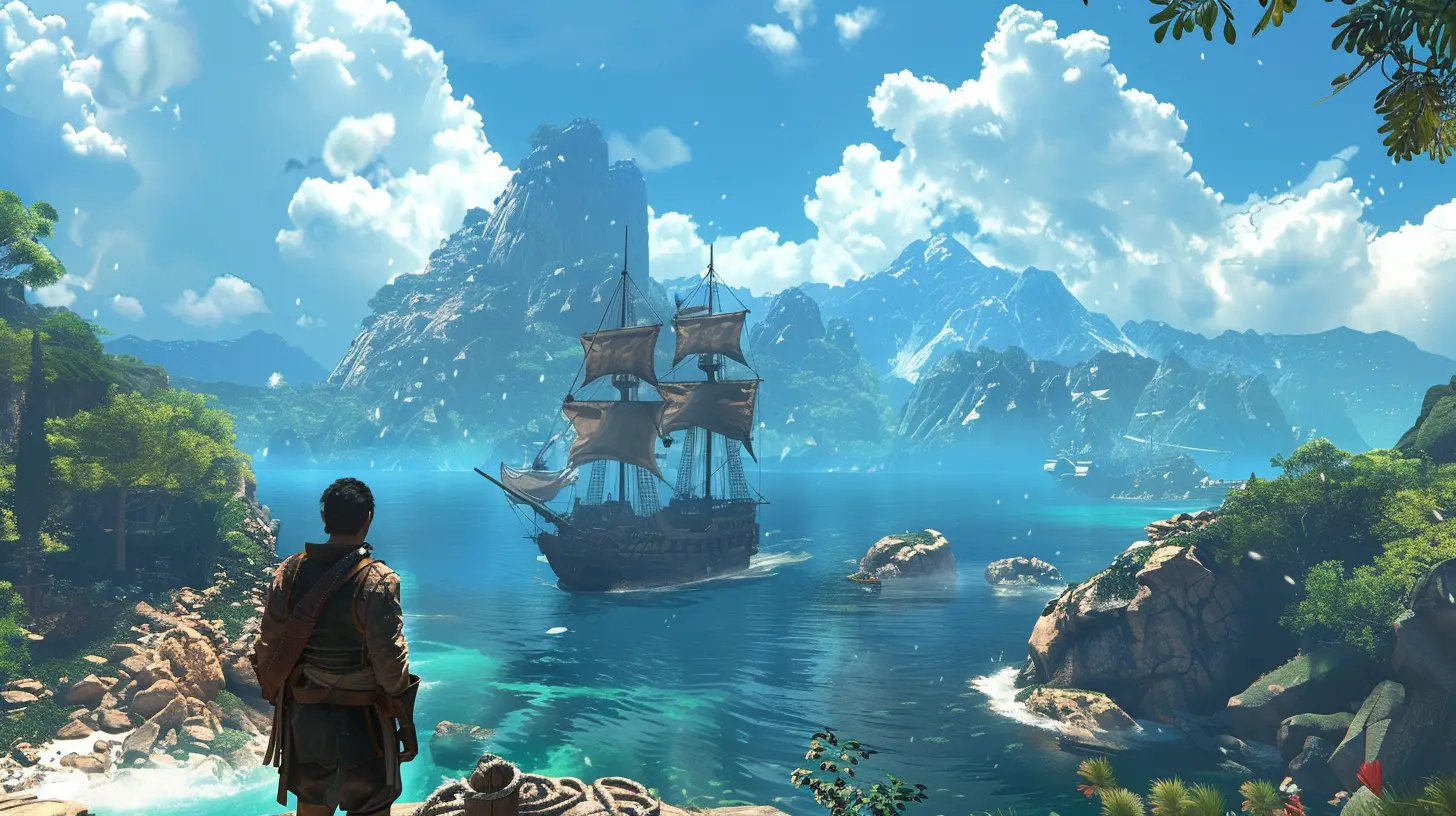The Role of Exploration in Modern Adventure Games
5 November 2025
Adventure games have always been about the thrill of the unknown. Whether you're scaling treacherous cliffs or delving into ancient ruins, there's something electrifying about venturing into a world where every corner hides a new secret. But in today's gaming landscape — with its cutting-edge graphics, massive open worlds, and deep storytelling — the role of exploration has taken on an even bigger, more dynamic purpose.
You’ve probably felt it: that moment when a game drops you into a vast, living world and just says, “Go.” No strict instructions. No blinking objective markers. Just you, your curiosity, and whatever lies ahead. That, my friend, is the essence of modern adventure games. And it’s a game-changer — literally.
Let’s dive in (no pun intended) and unpack how exploration powers the modern adventure game experience.
Why Exploration is the Heartbeat of Adventure Games
Think back to your first adventure game experience. What made it unforgettable? Was it the action? The puzzles? Or was it stumbling across something unexpected — a hidden path, a mysterious ruin, or a strange character with a cryptic message?Chances are, it was the thrill of exploring the unknown. Exploration isn't just filler content between cutscenes — it's the soul of the genre. It’s what turns a static environment into a living, breathing world begging to be uncovered.
Modern developers understand this and have taken it to the next level. Exploration now often works hand-in-hand with storytelling, puzzle-solving, and even emotional character arcs. It’s no longer just about going from point A to point B — it’s about the journey in between.
The Evolution of Exploration in Gaming
Let’s get real: games didn’t always look like they do now. Remember the pixelated worlds of early titles like “King’s Quest” or “Zelda”? Back then, exploration was limited by technology. Still, players were hooked on the idea of finding new areas, discovering items, and unlocking secrets.Fast forward to today, and exploration is a large-scale, high-definition adventure of its own. We're talking massive open-world environments like you find in “The Legend of Zelda: Breath of the Wild,” “Elden Ring,” or “Horizon Forbidden West.” These aren’t just spaces to move through — they’re worlds to exist in. You can climb mountains just because they're there, uncover stories simply by wandering off the path, and stumble into quests that change your entire playthrough.
The main shift? Exploration is no longer optional — it’s the main course.
Why Do We Love To Explore?
So, what’s the big deal about poking around an imaginary world? It’s actually pretty simple: it’s wired into our brains. Humans are naturally curious. We love uncovering things. Give us a beautifully designed landscape with caves, towers, forests, and ruins, and we’ll want to know what’s inside every single one of them.In modern adventure games, this curiosity is rewarded constantly. See a strange glow in the distance? You might find a legendary weapon. Spot a rickety old cabin on top of that weird hill? Maybe there’s a side quest with an emotionally wrecking story waiting for you.
Exploration feeds our need for discovery — and modern games are masters at tickling that itch.
Immersion Over Instruction: Letting Players Lead
One of the biggest differences in modern adventure games is how they guide you — or rather, how they don’t.Older games often held your hand. They pointed you in the right direction, gave you maps, gave you hints, and pretty much screamed, “Go here next!” Not anymore.
Games like “Breath of the Wild” or “Red Dead Redemption 2” let you figure things out yourself. They trust you to follow your instincts. And that trust? That’s powerful. When the game world isn’t shouting directions at you, you start to pay attention to the environment itself — the shape of the land, the placement of structures, the natural flow of rivers and trails.
This creates a deep sense of immersion. You’re not just playing a game — you’re living inside it.
World-Building Through Environment
Let’s take a moment to appreciate something amazing: environments now tell stories all on their own.You walk into a crumbled village. There’s no narrator explaining what happened. But the broken walls, half-written notes, and abandoned belongings paint a picture. You piece together a tragedy, a lost civilization, maybe even a mystery that drives the narrative forward.
That’s environmental storytelling — and it's an art form that thrives on exploration. Without venturing off the beaten path, you’d miss these quiet, impactful moments. It’s a subtle way games build lore, depth, and emotional weight.
Secrets, Side Quests, and Surprises
Okay, let’s talk rewards. Because let’s face it — we all love a good loot drop or unlockable reward.In many modern adventure games, the biggest battles or richest stories aren’t part of the main quest. They’re hidden away in secret places that you’ll only find if you go exploring.
Think of “The Witcher 3.” Some of the most powerful weapons and deeply emotional stories aren’t on the main path. You’ll find them in lost caves, haunted forests, or remote islands — places you wouldn’t go unless you were just curious.
That’s the magic of exploration. It turns games into treasure hunts. And who doesn’t love a good treasure hunt?
Exploration and Emotional Connection
Here's something you might not expect: exploration creates emotional attachment.When you spend hours combing through every inch of a game world — finding secrets, solving puzzles, meeting obscure NPCs — you start to feel like it’s your world. You weren’t just told what this world is. You found it. You earned it.
The more you explore, the more the game resonates with you. You connect with the locations, the characters, even the history. That emotional bond makes every twist in the story hit harder. When something changes in the world — when a town falls, or a character dies — it matters more because you were part of it.
Exploration Drives Replayability
Ever finish a game and immediately think, “I didn’t see half of what was out there”? That’s a sign of excellent exploration design.Games like “Skyrim,” “Ghost of Tsushima,” or “Elden Ring” are designed to reward multiple playthroughs. You can take a different path, make new decisions, uncover secrets you missed the first time.
This level of depth ensures you’re always finding something new. Exploration becomes the reason you come back — again and again.
Player Agency and the Freedom to Choose
Modern adventure games don’t treat players like passive watchers. They hand you the reins and say, “Go make your story.”Want to scale that snowy peak just to see the view? Go for it. Want to ignore the main quest for ten hours while you solve a murder in a sleepy village? That’s your call.
This level of freedom is only possible because of how well exploration is integrated into the core gameplay. It’s not a side feature — it is the feature. And it's what transforms players from spectators into co-creators of the experience.
The Future of Exploration in Games
Looking ahead, exploration is only going to get bigger, bolder, and more meaningful.With the rise of procedural generation, AI-driven narratives, and even virtual reality, future games could offer worlds so alive and unpredictable that no two explorations will be the same.
Imagine walking into a forest that grows and changes based on your actions. Or finding a city that remembers your choices from a previous playthrough and reacts accordingly.
The seeds are already there. Games are evolving, and exploration is leading the charge.
Final Thoughts: Why It Matters
At its core, the role of exploration in modern adventure games is about something deeply human: the desire to experience, to understand, and to connect. When games embrace exploration, they become more than just entertainment — they become journeys.So next time you boot up your favorite adventure game, don’t rush the main quest. Take the side path. Climb the unmarked hill. Open the door that isn’t glowing. Trust your curiosity.
Because in the world of modern adventure games, the greatest stories aren't always told — they're discovered.
all images in this post were generated using AI tools
Category:
Adventure GamesAuthor:

Leif Coleman
Discussion
rate this article
1 comments
Soliel McGuffey
Exploration in modern adventure games is like a whisper of forgotten secrets, beckoning players into uncharted realms. Each hidden path and shadowy corner pulses with untold stories, waiting for those brave enough to venture beyond the obvious. What mysteries lie beneath the surface, waiting to be unearthed?
November 5, 2025 at 4:31 AM

Leif Coleman
Thank you for your poetic insight! Exploration truly enhances the depth and intrigue of modern adventure games, inviting players to uncover hidden narratives and immerse themselves in the unknown.


